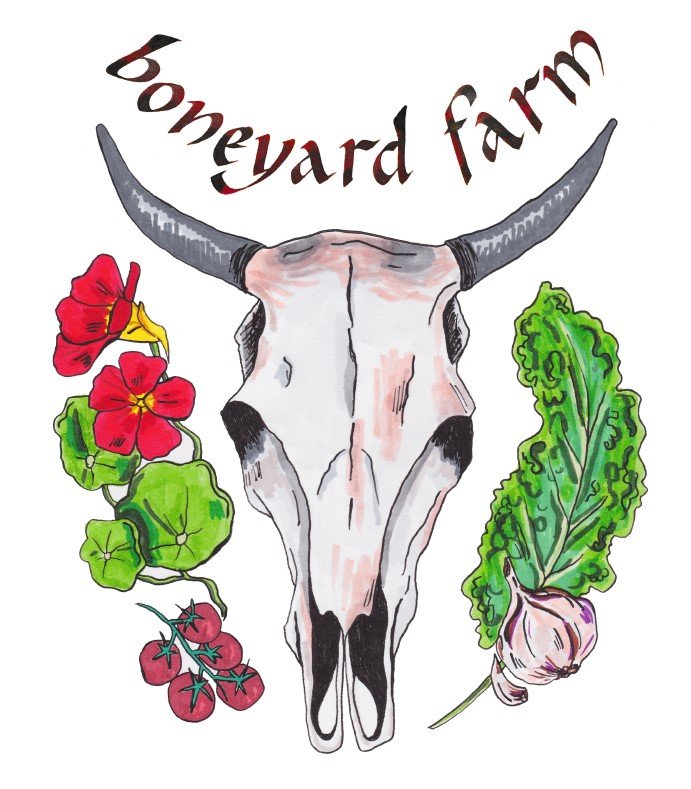How we got here.
Our unique story of land access and grit.
In 2018, we had a newborn and a hardscrabble 10-acre homestead on a back road in Bakersfield, VT, far from any town center or even pavement. We were raising meat chickens and pigs, and we had a handful of goats and a big garden. Six households had small weekly CSA shares from our farm, and I was bringing a baby and a van-ful of goods to a farmers market once a week. John’s fence business was busy, with a couple of employees and lots of jobs on the books, but no covered space for equipment and materials. He was getting materials delivered on tractor trailers to a small house in the middle of nowhere, and I was driving long distances delivering homegrown food. We had a bustling little homestead and big dreams, but felt like we were trying to scrap together our envisioned life against difficult odds. On the way home from a spontaneous roadtrip that was borne out of frustration and burnout, to be totally honest, we had the wild idea that maybe we should reach out to the land access team at the Vermont Land Trust (VLT), as we’d watched many other young farm friends and acquaintances do. We wanted to be stewarding land in closer proximity to a community, and we needed more acreage and infrastructure in order to grow both businesses.
We started pretty immediately working on a souped-up business plan for Boneyard Farm. We had the bones of a plan already, but tweaked it to apply to a larger piece of farmland, with access to markets and the ability to open a retail farmstand. We worked with the Intervale Center to flesh out financial projections and enterprise budgets, and hustled to save up as much as we possibly could and pay off as much personal and business debt as possible. We ate beans and rice and paid down debt and worked tirelessly. By the time we took our whole business plan binder to a lender, they were suitably impressed.
Meanwhile, we were looking for the right piece of land, with the help of the VLT. We actually made an offer on a former conventional dairy in the Northeast Kingdom in 2019, though it was far from our community and we were nervous about so many moving pieces. (Luckily) our offer was not accepted, and we went back to our corner, a little bruised but determined.
Eventually, we heard from VLT that there was a vacant dairy farm near us that was in the early stages of being conserved through a family trust– the patriarch of the family had passed away, and the intention was for the land to be conserved forever as a working farm. The family and the land trust just needed to find the right farmers. And we were told we might have to be patient. We knew the location, having driven by it many times over the years, and we were eager to meet up and discuss possible future plans. If you’ve been here, you know it’s a truly breathtaking farm. It is a once-in-a-lifetime opportunity to get the chance to steward it.
So… a pandemic, another baby, and a whole lot of scheming and scrimping and planning later, we finally reached a sales agreement and awaited the closing. Because of COVID funding kerfuffles and a few logistical hiccups along the way, things were delayed many times. We were now into the winter of 2021, and our second son had been born. We were flustered by the idea of planning a growing season and not even knowing for certain where we’d be when it started, so we agreed with the family to start leasing the farm March 1, so that we could move our pregnant sows there and start building an unheated high tunnel. Finally, on March 26, 2021, we closed on the farm! The closing was in an attorney’s office in St. Albans, and the Vermont Land Trust purchased the conservation easement for the farm property, which is in perpetuity, and then five minutes later, we purchased a conserved farm.
We set to work. Moving, building, fixing, turning an old hayfield into a market garden. Marketing, parenting, coordinating, problem-solving, applying to new farmers markets, starting seeds, caring for animals. Not much sleeping. It took us months to finish completely moving out of and renovating our old house to get it ready for the real estate market, while we drove back and forth, built infrastructure here in Fletcher, took care of an infant and a toddler, and opened our farmstand to the community. When we moved into the new place, we didn’t have hot water, a stove, or a fridge. Our hens were still at our old farm for a month or two. We all slept in one bed and camped out on one level of the house for two years, as the upstairs of this farmhouse was unlivable and needed costly structural work. We paid two mortgages for months and juggled so very much, including two businesses and two young boys - and truly have been in survival mode for much of our first years here. Sometimes looking back on those first wild years here gives me a bit of vertigo. I truly don’t know how we did it. In some ways, it almost did us in. But here we are.
This year, as we head into our fifth growing season here in Fletcher (I don’t want to jinx anything but) we feel like we’ve gotten our feet under us at least a bit. Though 2025 feels topsy-turvy in its own way, we have systems and operations at least somewhat figured out, and we are feeling hopeful and motivated for another great year of growing food for our beloved community.






